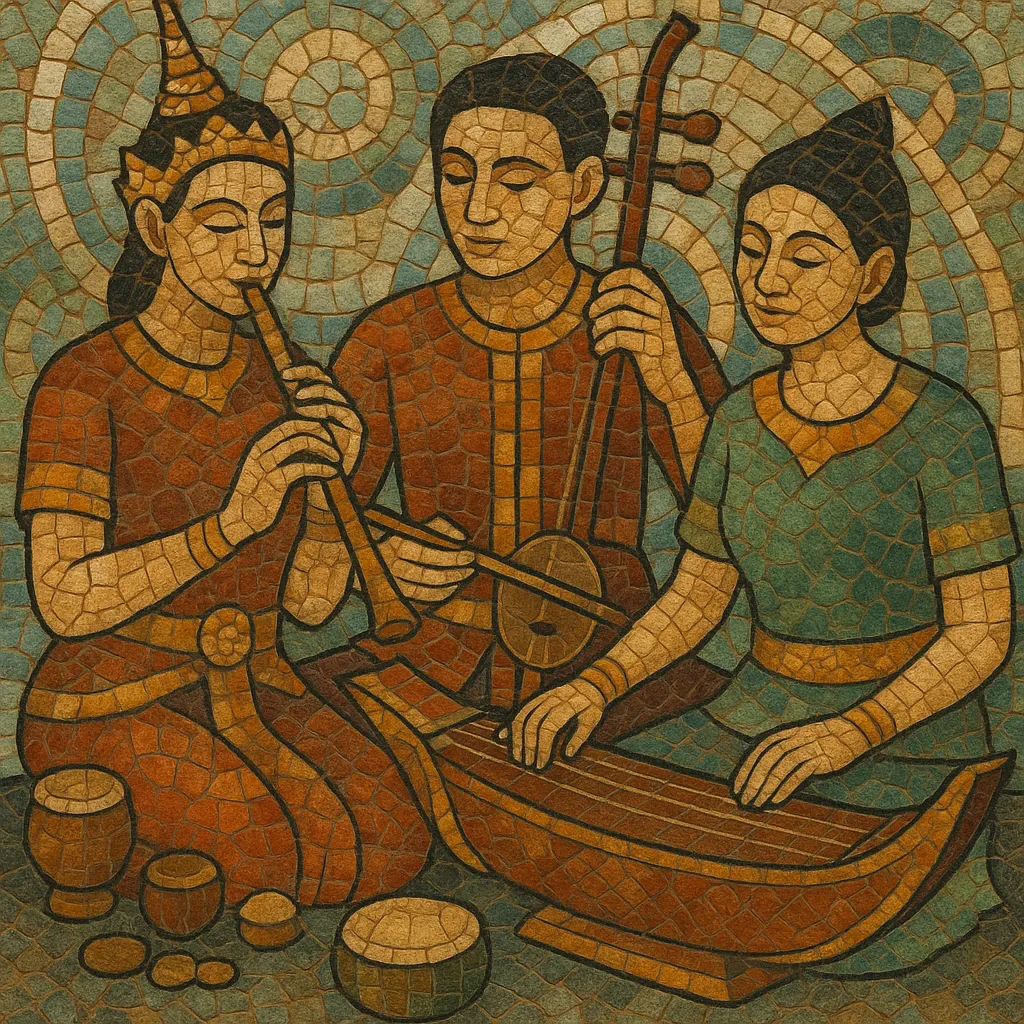Mahori is a refined Thai classical chamber ensemble traditionally associated with royal and aristocratic entertainment. It features a soft, intimate sound built around bowed fiddles (saw duang, saw u, and sometimes the ornate saw sam sai), the plucked floor zither jakhe, and the bamboo flute khlui, supported by light hand percussion such as thon–rammana and ching.
Unlike the louder piphat ensemble, mahori favors lyrical melody, supple dynamics, and heterophony—each instrument elaborates the same tune with individualized ornaments. Vocals, often setting classical Thai poetry, may be included. The repertoire adapts broader Thai classical forms and mode systems (thang), presented in layered tempi (sam chan → song chan → chan) that gradually intensify while preserving elegance.
Mahori emerged in the Thai royal courts during the Ayutthaya period as an intimate alternative to the powerful piphat. Early descriptions and iconography suggest small, mixed ensembles featuring strings, flute, and light percussion, often performed by women in palace settings to accompany refined social occasions and courtly dance.
With the establishment of Bangkok (Rattanakosin), mahori repertoire and instrumentation were standardized and expanded. Master musicians and royal patrons shaped a courtly aesthetic that prized lyrical delivery, intricate ornamentation, and balanced ensemble color. The ensemble avoided the penetrating double-reed pi nai, opting instead for the gentler khlui.
During the 20th century, Thai cultural institutions and conservatories documented repertoire, modes (thang), and performance practice. Composers and teachers such as Luang Pradit Phairoh and Montri Tramote systematized pedagogy, ensuring mahori’s transmission. University and state ensembles brought the genre to concert stages and radio.
Today, mahori thrives in academic, ceremonial, and concert contexts. While remaining a classical form, its melodic turns, vocal declamation, and heterophonic texture have informed aspects of modern Thai songcraft, especially urban ballad traditions.


